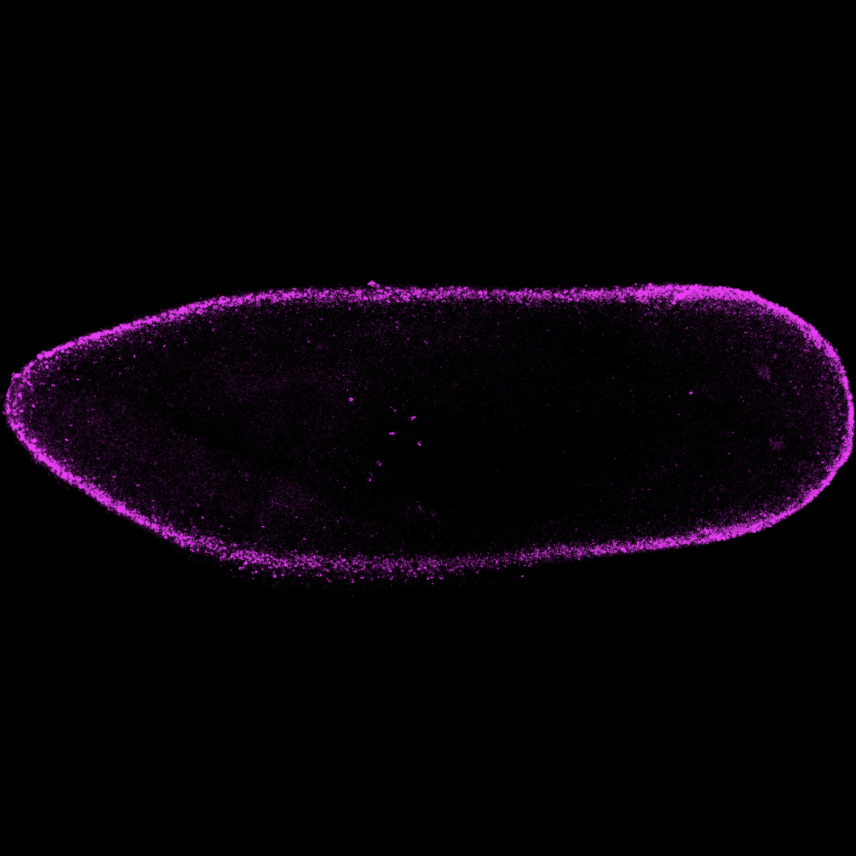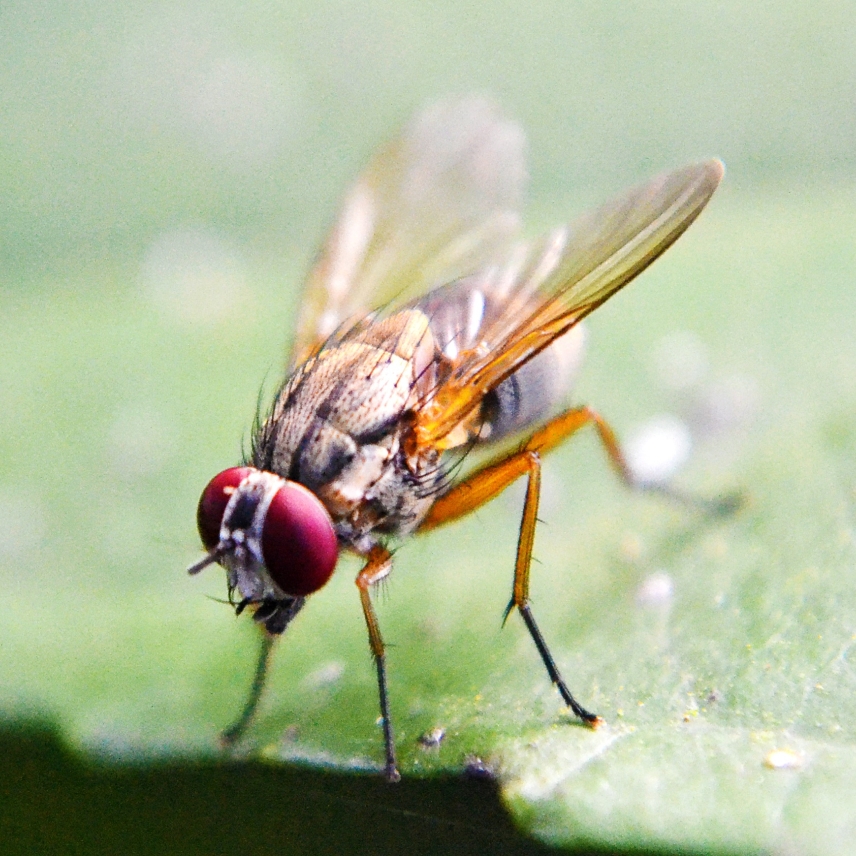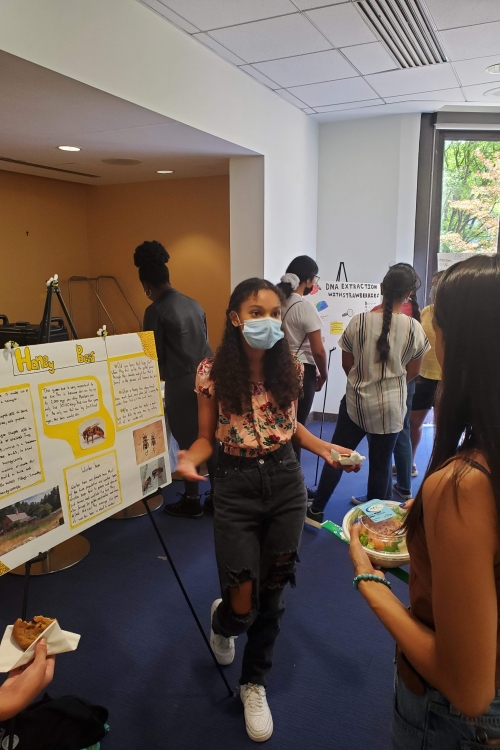Annual Report 2022

Whitehead Institute is a special place — the atmosphere is energetic and exciting, the culture synergistic and collaborative, the community diverse and inclusive.
Our primary investigators are among the world’s most talented and accomplished researchers — with intelligence, creativity, and scientific passion that is off-the-charts. Along with our postdoctoral researchers and staff scientists, they are creating knowledge that improves human wellbeing: catalyzing new ways to address conditions from cancer and diabetes to neurodegenerative and infectious diseases; working to improve food crop production; and striving to understand how cells and tissues rejuvenate.
They are also furthering the conduct of biomedical research by creating highly effective tools and methods that are used by scientists around the world — advances ranging from CRISPR-based methods for regulating gene expression to mechanisms for understanding how cells organize into tissues and organs.
This Annual Report offers a retrospective snapshot of the scientific questions the Institute has been pursuing and the many achievements it has realized. But it also provides a lens on where we are going, scientifically, and on the community we are becoming:
Whitehead Institute is forging new frontiers in science and making paradigm-shifting discoveries — asking big, ambitious questions and figuring out how to answer them.
We are becoming a model biomedical research community: a collaborative, inclusive organization that empowers everyone within it to thrive in the pursuit of excellence.
These are brief articulations of the overarching mission and the values to which Whitehead Institute is committing itself. I encourage you to read the full statement of our mission and values in this report.
Please view this Annual Report as an introduction to who we are and what we have accomplished over this past year — and to what we can accomplish in pursuing our bold mission into the future.
Sincerely,

Ruth Lehmann
President and Director
Our mission and values
Since its founding in 1982, Whitehead Institute has been renowned for pioneering discoveries in fundamental biomedical science. In 2022, looking forward, Institute director Ruth Lehmann asked the community to consider the overarching objectives and culture that would best empower bold, creative scientists to address the biology-based challenges humanity will face in coming decades.
That process — which engaged primary investigators, staff scientists, trainees, administrative staff and the board of directors — resulted in a contemporary restatement of our long-standing mission: It specifically articulates our purpose, who we are, what we do, and how we do it. We are excited to present this restatement of Whitehead Institute’s mission and of the values we deem essential to our success.
Whitehead Institute’s mission is to forge new frontiers in science, uncovering insights today that unlock the potential of tomorrow.
We are a biological research institute dedicated to making paradigm-shifting insights into the fundamental principles of life. Our advances in genetics and genomics are now enabling us to tackle the complexities of life with unprecedented depth and breadth. We do this work to benefit society — addressing challenges of global scope from disease to climate change. We cultivate a diverse, open community and foster a deeply curious and collaborative culture in which high-potential ideas are given the space to take shape.
These are the values guiding our work and the community we seek to sustain —

We seek to identify novel approaches and inventive solutions. We are proactive and nimble, unafraid to shift priorities and resources to face new challenges.

We strive to create a welcoming and familial environment, believing in reciprocity over competition. We treat others with dignity and respect — taking ownership over our individual actions and their impact. We embrace a diversity of people and ideas and encourage everyone’s voice to be heard.

We believe in breaking boundaries. We approach every challenge with boldness, rigor, and integrity. We don’t give up, learning from our mistakes and retooling when necessary.

We value a training environment that fosters curiosity, innovation, and open-mindedness. We believe that a collaborative training environment emboldens our community to make a meaningful impact on science and society.

Drosophila testes with stain. Whitehead Member Yukiko Yamashita uses Drosophila as a model organism to study the behavior of germ cells.
Yukiko Yamashita
Whitehead Institute forges new frontiers in science, uncovering insights today that unlock the potential of tomorrow. Our scientists make paradigm-shifting insights into the fundamental principles of life — seeking to tackle the complexities of life and to address challenges of global scope from disease to climate change. Listen to updates on our accomplishments; then enjoy a selection of news stories and multimedia features on Whitehead Institute science in 2022.
Listen to our investigators describe some of their most notable accomplishments from the past year; then enjoy a selection of news stories and multimedia features on Whitehead Institute science in 2022.
Pulin Li
Gretchen Ertl/Whitehead Institute

Pulin Li
Recreating cell social networks in a dish
As a multicellular organism develops, proper tissue patterning depends on the organism’s cells being able to send information to each other. Whitehead Institute Member Pulin Li studies how cells within growing tissues in embryos communicate.
“I’m interested in really understanding the rules of cell-cell communication and what controls, for example, how far cells can send the information to each other and how they interpret that information,” says Li. “But in a developing embryo, you don't have access to all these cell types and the dynamics of the process.”
To date, most scientists have taken a “top-down” approach to studying complex biological questions like embryo development: take an animal embryo and perturb it or mutate a gene and see what happens. “But now,” Li explains, “there's a lot more interest about how we can build these complex processes from the bottom up — create biological systems from scratch to learn how they work.”
Li has developed a way to create synthetic signaling systems, starting on the level of individual cells. First, she engineered cells to be either signaling or receiving cells for various molecular signals. “We build fluorescent signal reporters into the cells, so that the cells glow when they receive the signal,” she said. “Then, we take movies over a two- or three-day period of time, and watch signals traveling from one side of the dish to the other.” Finally, Li analyzes these videos with image-analysis algorithms to make sense of the signals.
Going forward, Li intends to use her cell communication methods to create organoids — masses of lab-grown cells that work much like organs in the human body. “If we can accomplish that, it would open up new avenues for understanding the basic science of tissue development and for more effectively creating novel therapeutics,” she said.
Researchers in the Weissman Lab
Gretchen Ertl/Whitehead Institute
New methods spur research advances
For decades, Whitehead Institute Members and Fellows have been globally renowned for creating new research tools and methods that drive major scientific advances. This past year, Whitehead Institute Member Jonathan Weissman introduced two major technical advances that have opened new pathways for exploring previously intractable biological questions.
In one advance, he and his colleagues combined CRISPR-based genetic screening with genome-wide use of the single-cell sequencing method called Perturb-seq to create the first comprehensive functional map of genes expressed in human cells — tying each gene to its job in the cell. The data creates myriad research opportunities for scientists worldwide. “Rather than defining ahead of time what biology you're going to look at in experiments, this map enables you to simply screen the database to see the genotype-phenotype relationships,” said Weissman.
For example, his team used the data to explore cellular effects of genes with unknown functions, and to identify genes that cause chromosomes to be lost or gained. “This dataset is going to enable all sorts of analyses we haven't yet envisioned, and allow innovative studies by people investigating a huge array of biological questions.”
In the second advance, Weissman and his collaborators developed a method for cancer lineage tracing: tracking individual cancer cell lines through their generations of development and observing the steps by which they evolve their most deadly traits. Their approach uses CRISPR technology to embed within each cell an inheritable and evolvable DNA barcode. Each time a cell divides, its barcode gets slightly modified. When the researchers eventually harvest the descendants of the original cells, they can compare the cells’ barcodes to reconstruct a family tree of every individual cell, just like an evolutionary tree of related species. Then researchers can use the cells’ relationships to reconstruct how and when the cells evolved important traits.
The team’s recently published study used the lineage tracing method to track lung cancer cells from the first activation of cancer-causing mutations. That research revealed new insights into how lung cancer progresses and metastasizes — and demonstrated the wealth of new knowledge that lineage tracing can provide. “Previously, the critical events that cause a tumor to become deadly have been opaque because they are lost in the cells’ distant past,” says Weissman. “But this gives us a new lens on that history, enabling us to view cancer evolution with much higher resolution than ever before.”
Partners in discovery

Illustration: Daniel Gray-Barnett
Helping to drive the Institute’s path-breaking research are nine Technical Innovations Centers — core scientific facilities that provide both state-of-the-art equipment and highly trained, deeply experienced technical staff. The directors of these Centers are, themselves, leaders and pioneers in their fields. Leveraging their expertise, experience, and creative insight, they are partners in the research process — helping the Institute’s investigators expand the boundaries of scientific inquiry and pursue previously inaccessible aspects of biology.
One of those research partners is Heather Keys, director of the Functional Genomics Platform. “We help Institute scientists use the CRISPR-Cas9 gene editing system and other large-scale approaches to study fundamental biological processes in a growing variety of systems,” she says. (See "New methods spur research advances," above, for two examples.) “CRISPR can also be used to uncover the answers to more specific questions — for example, by identifying gene targets that sensitize patient-derived cancer cells to a new treatment to help us fine-tune therapeutics.”
One of the Platform’s main strengths is its capacity to adapt and work closely with investigators to build new technologies. These fresh approaches enable Institute researchers to pursue answers to old, troublesome questions and to identify wholly new opportunities. “For example, looking down the road, one of the most exciting opportunities is the potential to use CRISPR to help create precision medicine pipelines for an array of medical conditions,” says Keys.
The Institute’s other Technical Innovations Centers provide technical capacities, expertise, and innovative approaches in bioinformatics, flow cytometry, genome technology, genetically engineered models, metabolite profiling, microscopy, quantitative proteomics, and stem cells.

Whitehead Institute researchers are breathing new life into the study of rejuvenation — the ability of cells to repair and replenish tissues — and are potentially learning how to slow or reverse the changes our cells’ experience over time. The following series highlights some of the most provocative and fundamentally important questions our scientists are seeking to answer.
Illustration: Daniel Gray-Barnett
Introduction
The root words of rejuvenation mean “young again.” While we still can’t turn back the hands of time, Whitehead Institute researchers are studying the biological markers of aging in order to better understand what cellular processes underlie the changes our bodies undergo over the years. Their work helps us understand what it means to “age” as a person, and may someday lead to therapies that can mitigate some of the effects of the aging process.
“Our bodies change dramatically in a lot of ways as we age,” says Whitehead Institute Member Iain Cheeseman. “The connection between the ability of cells to divide and proliferate, to repair and replenish tissues, and what changes in our bodies as we age is something we're really curious to investigate. And I think we have some molecular hooks that we can explore now that we didn't even just a couple years ago.”
Cheeseman’s work on cell division investigates not only how cells divide, but what’s going on when cells are not dividing. Cells face an onslaught of challenges over time. “One of the biggest challenges that aging cells and their proteins face is oxidative damage,” Cheeseman said. When a cell undergoes too much damage, he went on, it can lose its ability to divide. “It basically is entering this irreversible pause state, where it's going to start sending a bunch of signals that are sometimes problematic for tissue inflammation, or are interrelated to other kinds of diseases and cancer, and that can be a problem." Cheeseman’s work could eventually inform therapies for rejuvenating aging cells, prolonging life or extending the fertility window for women.
Whitehead Institute Member Peter Reddien is also studying a form of rejuvenation — regeneration. His work on regenerative worms called planarians is revealing basic principles of how animals can rebuild their tissues when they are damaged. Planarians have never been documented to die of old age — in fact, they can reproduce by tearing themselves in half, meaning that every planarian at Whitehead Institute has the identical genetic makeup of one original animal. Reddien’s work illuminates the cell types and genetic programs that confer this form of extreme longevity to the worms.
Some cellular markers of aging are programmed into the cells themselves; the calls are coming from inside the house, so to speak. Researchers in the lab of Whitehead Institute Member Siniša Hrvatin study the effect of reduced metabolism on the body’s epigenetic clocks — a series of changes over time to the structural organization of DNA that affects which genes are expressed. These epigenetic markers are often used to measure one’s “biological age” — the progression of which, unlike chronological age, differs slightly from person to person. Hrvatin is using these markers to determine how different states — specifically torpor, a state of “suspended animation” used by many animals to survive extreme conditions — could affect the process of biological aging.
Whitehead Institute Member Yukiko Yamashita addresses another pre-programmed hallmark of aging: the loss of ribosomal DNA. The product of that DNA, ribosomal RNA, together with proteins, forms cells’ protein-making factories. As time progresses, most cells in the human body lose some of their ribosomal DNA — but one cell type is able to retain the correct amount, and even make more. Yamashita’s recent work explores how germ cells — sometimes called “immortal” cells due to their ability to escape the fate of somatic cells, which die with each organism and are mare completely anew in the next generation — are able to bypass the gradual loss of ribosomal DNA over the years. Whitehead Institute Director Ruth Lehmann also studies these “immortal” cells, focusing on their life cycle and how they are able to persist throughout generations without aging to transmit the information needed to create an entirely new organism.
In this multimedia collection, we dive deeper into each of these researchers’ projects — and more. Explore the links below to learn how researchers at Whitehead Institute are breathing new life into the study of rejuvenation.
Whitehead Institute Member Peter Reddien seeks to understand how planarians (Schmidtea mediterranea) are able to regenerate so effectively. Researchers in his lab have uncovered many of the mechanisms and principles of regeneration. This work may prove useful in the field of regenerative medicine, which aims to promote better healing or even regrowth in people.
Much of biology is defined by activity: the rapid growth of an embryo, or the adventurous life cycle of a parasite, or the frenzied evolution of cancer cells. But for two Whitehead Institute researchers, there is much to learn by studying periods of rest.
Researchers at Whitehead Institute study the many aspects of germ cells that set them apart from other cell types. They ask questions about how germ cells migrate across the embryo to meet developing gonads, and how germ cells ultimately give rise to eggs and sperm.
Can a "cocktail" of expressed genes promote rejuvenation in the cell? Researchers in Whitehead Institute Member Jonathan Weissman’s lab use a CRISPR-Cas9 gene editing tool called Perturb-seq to systematically search for promising gene candidates.
Research at Whitehead Institute follows broad, intersecting trajectories. These collections of videos, podcasts, and articles aim to illuminate the different angles our scientists take to tackle the same problems, and highlight the interdisciplinary, cross-pollination that often leads to exciting advances.

Whitehead Institute Member Yukiko Yamashita and researcher
Gretchen Ertl/Whitehead Institute
At the heart of Whitehead Institute are the scientists, trainees, and technical experts who drive our research forward. Read on to learn about the achievements and perspectives of individual members of our community, and about our efforts to ensure that each person at Whitehead Institute can pursue their full potential within an equitable and inclusive environment.
Lindsey Backman
Gretchen Ertl/Whitehead Institute
Institute welcomes new Whitehead Fellow
Lindsey Backman, who studies the structure and function of microbial organisms, has been named a Valhalla Fellow at Whitehead Institute and is the newest member of the Whitehead Fellows Program. Her lab will study the human microbiome, its constituents, and the ways that its resident bacteria protect the enzymes they rely on for survival.
The Whitehead Fellows Program provides highly talented and accomplished recent PhDs the opportunity to launch their own research programs, instead of working as postdoctoral researchers in a senior scientist’s lab. Founded in 1984, the Program has become the model for advancing the careers of biomedical research’s most promising young scientists.
“Each Whitehead Fellow brings both a pioneering spirit and an exciting vision for researching important questions in biology,” says Institute Member Yukiko Yamashita, who is co-director of the Whitehead Fellows Program.
“Lindsey’s work with microbiota will expand the range of our investigations and her perspectives will enrich the Institute community.”
Backman received her PhD in chemistry from Massachusetts Institute of Technology (MIT) in 2022, having earned a bachelor of science in chemistry, summa cum laude, from the University of Florida in 2015. As an undergraduate, she received honors including the University of Florida Presidential Service and University Scholars awards. She also participated in HHMI’s Exceptional Research Opportunities Program and its Capstone Award program — which both enable students from underrepresented backgrounds to work with a university professor to pursue summer research projects. Through those programs, she worked for two summers as a research assistant in the lab of Catherine Drennan, MIT professor of chemistry and biology and HHMI Investigator, who subsequently became Backman’s PhD advisor. In graduate school, Backman benefited from multiple programs that provided funding and a supportive community, including the HHMI Gilliam Fellows Program.
In her Whitehead Institute lab, Backman will continue to investigate the structure and biochemistry of the collection of gut microbes that comprise the human microbiome and that are a key to human health. One aspect she will focus on is how specific bacteria produce unique proteins to metabolize nutrients and repair broken enzymes. To advance those studies, at the outset of her Valhalla Fellowship at Whitehead Institute, Backman will work with the Hung lab at Broad Institute of MIT and Harvard, developing tools and methods to expand her investigations of bacterial function and the relationship between bacteria and human health.
“I’m grateful to be able to pursue the next steps in my investigations with the Valhalla Foundation’s support and in the very special environment that Whitehead Institute offers,” Backman says. “The Institute’s commitment to helping young researchers pursue their scientific visions — and to providing the tools, training, and collaborative support needed to push the boundaries of current thinking — is empowering."

Pursuing the Institute’s plan for diversity, equity, and inclusion
Whitehead Institute’s ability to continue as a leader in biological research and training depends on our being a diverse, equitable, and inclusive community — a place where each person can thrive both individually and as part of a cohesive, highly effective organization.
Therefore, in July 2021 the Institute announced a multifaceted Strategic Plan for Diversity, Equity and Inclusion (DEI). The core commitments made in the Plan include:
- Improving the hiring, retaining, and promoting of diverse talent
- Creating and maintaining an inclusive culture that promotes physical and mental well-being and respect for all Whitehead Institute community members
- Developing partnerships to increase engagement and outreach with local communities to improve accessibility particularly for individuals from groups underrepresented in biomedical sciences
- Encouraging open dialogue and facilitating learning opportunities to address DEI topics, and making them available to the entire Whitehead Institute community
During the past year, the Institute has undertaken a range of new initiatives in line with those commitments, including:
- Formation of the Institute’s DEI Council. Comprising representatives of faculty, administration and research staff, Council members serve as ambassadors for diversity, equity, and inclusion throughout the Whitehead community and are responsible for supporting the Institute’s DEI commitments.
- Creation of a DEI Seminar Series, which enables the Institute community to learn from and engage with prominent speakers from across the sciences, social sciences, and humanities. Seminar topics have ranged from the origins of Juneteenth to Hispanic, Black, and Asian American/Pacific Hawaiian/Pacific Islander histories and heritages, to a celebration of Pride Month. In addition, we created the DEI Heritage Email series, which informs the entire Whitehead Institute community about those topics and others — including Native American Heritage Month, Women's History Month, and Mental Health Awareness Month.
- Launching the Whitehead Summer Internship Program, in which high school students in grades 10 to 12 who are from historically underrepresented groups work directly with our Members, postdocs, and staff scientists to explore biomedical science and gain experience with hands-on research.
- Broadening and diversifying the pool of applicants to the Whitehead Fellows Program by expanding awareness and permitting self-nominations; and creating an option that enables selected Fellows to supercharge their professional development through focused training in cutting edge tools and methods. We also launched an expansion of our postdoc mentoring program, offering these early-career researchers opportunities for formal mentoring relationships with primary investigators from other labs.
- Engaging the entire Institute community — including faculty, staff, trainees, and regular visitors — in a formal, small-group DEI and Gender Inclusion Training program that promotes interpersonal engagement. A second training session is planned for spring 2023.
- Appointing an Institute DEI Officer and DEI Specialist who bring focused energy and insight to advancing the initiatives described in the DEI Strategic Plan.

The Institute’s Diversity, Equity & Inclusion (DE&I) Seminar Series continues with Dr. Matthew Clair, Assistant Professor in the Department of Sociology and (by courtesy) the Law School at Stanford University. Dr. Clair’s talk, titled “Recognizing and Responding to Racism: Lessons for Health and Medicine," explores social inequities in medicine.

We continue the Institute’s Diversity, Equity and Inclusion Seminar Series with Sandra Yamate, CEO of the Institute for Inclusion in the Legal Profession.

Dr. Jeremy Yoder, assistant professor in the Department of Biology at California State University, Northridge leads an interactive discussion.
Postdoctoral researchers at Whitehead Institute
Many of Whitehead Institute’s postdoctoral researchers say that they entered into research careers because of formative experiences that they had with teachers and mentors. Without these experiences, they may not have realized that science was a good fit for them, or that they could succeed in it. Often, these postdocs find themselves motivated to pass on those lessons to the next generation by teaching, mentoring, and participating in science outreach, including through Whitehead Institute’s outreach programs. Here, some of the Institute’s postdocs share what their experiences as mentors and mentees have meant to them. Text has been adapted from past interviews.
“I have always been fascinated with biology in the extreme, such as in microgravity conditions. During my master’s training, I was accepted to the Space Studies Program of International Space University, which allowed me to learn more about space biology and...
Read more“Outreach is one of my favorite parts of science, tangential to the actual research. You can help nudge people who might be interested in the right direction. I think exposure is very important, to give people a chance to figure out if working in science is something...
Read more“I became interested in science primarily due to a middle school teacher who showed us really fun and exciting science experiments. He would ask us questions and then do experiments, and show us how we could use what we observed to figure out the answers. Seeing...
Read more“I do a lot of tutoring and volunteer work with young students. I also always try to have an undergraduate in the lab that I can help train. I like helping students discover what they are passionate about. I think watching a student finally work through a problem...
Read more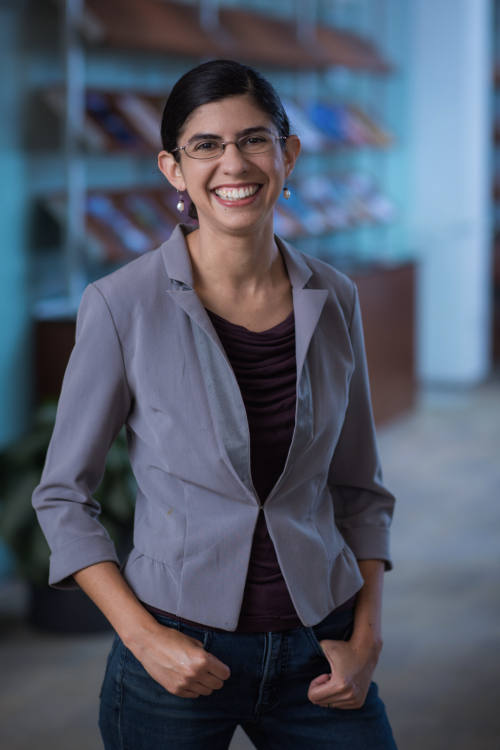
“I was a Partner in Whitehead Institute’s high school teachers program for several years, during which time I met with various teachers to share my expertise, answer scientific questions, and serve as a resource. That was a really wonderful experience for me,...
Read more“In college I decided that I wanted to teach biology. I was the head teaching assistant and everything. I was told that if I wanted to teach at the college level, which I did, then I should get a PhD. No one in my immediate family had a PhD, and as far as I know,...
Read more
Kara McKinley
Courtesy of Kara McKinley
Institute alumni continue to mentor the next generation of biomedical researchers
For many of Whitehead Institute’s graduate students and postdoctoral researchers, the commitment to mentoring and to science outreach continues throughout their careers. Kara McKinley, who completed her doctoral research in Institute Member Iain Cheeseman’s lab in 2016, is a good example. Now an assistant professor of stem cell and regenerative biology at Harvard University, McKinley studies the regenerative properties of the uterus. She also created Leading Edge, an initiative intended to improve the gender diversity of life sciences faculty in the United States. Here, she offers thoughts on how her Institute experience informs her own approach to mentoring members of her lab:
“I model a lot of my mentorship off of the mentorship I received from Iain. We’re not the same, obviously, and I have also incorporated things I learned from my postdoc mentors. One of the most important things I learned from Iain was about being generous with your mentorship and sponsorship. He sat in the lab, not his office, and so we always saw how many people came to talk to Iain about job advice or things that were going on in their lab and things like that. I still talk to him a lot and he provides a lot of input and insight into challenges I might be facing as a new principal investigator. He’s a forever mentor. It was important for me to see that model because it's something that I try to do as well, to be generous with the time I have for people.
“One other thing that I want to say about Whitehead Institute is how awesome the support staff were. They were really integral to everything that we did. As I have worked at other places, I have really come to appreciate the way that Whitehead Institute fostered a sense of community including both the people at the bench and the people who make it possible for them to be at the bench."
Whitehead Fellows Kipp Weiskopf and Tobiloba Oni
Gretchen Ertl/Whitehead Institute
Whitehead Institute’s accomplishments reflect both the exceptional talent it attracts and its unique environment – one marked by ingenuity, belonging, courage, and learning. Within this supportive and collaborative community, our scientists are driving major discoveries, creating important research tools and methods, and spurring translation of their work into new therapeutics. Here are snapshots of our impact this past year.

Sarah Williamson
Courtesy of Sarah Williamson
Shaping the future of biomedicine
One of the rewards of guiding an organization such as Whitehead Institute is knowing that you’re helping advance its goal of improving the health of people. Indeed, I encourage you to read the newly refined statement of our compelling mission — and of the values guiding its pursuit — in this report. And I invite you to embrace and advocate for our mission: Whitehead Institute forges new frontiers in science, uncovering insights today that unlock the potential of tomorrow.
Each member of the board of directors knows that the scientific discoveries emerging from Institute labs today unlock biology’s potential for future impact. We see that the Institute's labs and its technical innovation centers are creating next-generation technologies that open whole new vistas of scientific inquiry. And we see the way that Whitehead’s eminent faculty trains some of the world’s most talented students and early-career researchers — nurturing the next generation of leaders in biomedical research.
As proud as we are of all that Whitehead Institute has accomplished over this past year, we are even more enthusiastic about what its extraordinarily creative, skilled, and committed scientists can achieve in years to come. We envision even more discoveries that shed light on fundamental causes of disease — and that spur development of breakthrough therapies for conditions ranging from cancer to Alzheimer’s to the next emerging viral disease.
We encourage you to continue learning about the courageous and impactful science being done at Whitehead Institute. And please consider how you can help us in our quest to answer some of the most pressing questions about health and disease.

Sarah Keohane Williamson
Chair, Board of Directors

Mary Gehring
Gretchen Ertl/Whitehead Institute
Philanthropy advancing efforts to protect agriculture during climate change
For most of recorded history, climate changes occurred over centuries or millennia, allowing plants to adapt to variations in temperature, precipitation, and atmospheric composition. However, humans’ actions are accelerating the pace of those changes, with far-ranging consequences: Food crop yields are diminishing in many regions, as is seed protein content in corn and rice crops.
These changes will jeopardize food security for large segments of the world’s population, many of which are already experience serious malnutrition. Mitigating these disastrous effects on agriculture and food security are key facets of Whitehead Institute’s Initiative on the Biology and Health of Climate Change. And they are the focus of one of its cornerstone programs, the Dr. Vincent J. Ryan Orphan Plant Project. The Project exemplifies how philanthropy can power biological research and biotechnological development designed to improve quality-of-life for millions of people around the world.
The Project’s goal is to bioengineer a series of food crops that are more nutritious and more resilient to climate change than many current crops. The resulting biotechnologies could ultimately help protect millions of people from starvation.
The research program is led by Institute Members Mary Gehring, Jonathan Weissman, and Jing-Ke Weng. “It’s increasingly clear that current agricultural practices — and the most commonly grown crops — won’t be sustainable with climate change,” observes Weissman, who is a pioneer in applying gene-editing technologies. “If we hope to feed the world’s growing population, scientists must develop transformative methods to bioengineer nutritious plants better adapted to variable environmental conditions.”
The Project will focus initially on pigeon pea — a high protein plant farmed in India, Africa, and the Caribbean — and on other “orphan crop” species where the researchers can make rapid advances. “These plants are a largely untapped source of genetic diversity and possess valuable traits that make them highly nutritious and better-able to thrive in challenging conditions,” says Gehring, who studies plant epigenetics, which is information outside of the DNA. “We intend to identify the molecular basis for these traits and develop genome-engineering technologies enabling us to increase their beneficial effects.”
The Project’s core objective is to improve orphan crop plants’ food-producing potential and resilience to environmental stress, explains Weng, a plant biologist who has done path-breaking research on metabolic evolution in plants. “But we hope that what we learn about adaptive traits in those plants — coupled with the biotechnologies we develop — also enables us to improve widely-grown crops such as corn, soybean, and rice.”
Looking broadly, Institute director Ruth Lehmann explains that, “The philanthropic support that we’ve received for the Dr. Vincent J. Ryan Orphan Plant Project has been catalytic. Our long-term ability to leverage biological research to address the existential challenge of climate change depends on new philanthropic partners coming forward to work with us.”

Brit d'Arbeloff
Courtesy of Brit d'Arbeloff
Talking with Brit d’Arbeloff
For more than five decades, Brit d’Arbeloff has seen and experienced the challenges facing women in science and engineering. She was the first woman to receive an engineering degree from Stanford and finished first in her class — but had difficulty getting a job after graduation. Then, earning her master’s degree as the sole woman in Massachusetts Institute of Technology’s mechanical engineering department, she had to grapple with the fact that no faculty advisor would grant her access to their research labs. Despite those and other hurdles, she had an accomplished engineering career.
In the years since, d’Arbeloff became a strong advocate for, and philanthropic supporter of, biomedical research. A longstanding member of the Institute’s board of directors, d’Arbeloff is also one of its most abiding donors: Her contributions include a generous gift to establish the Brit Jepson d’Arbeloff Center on Women’s Health.
Sharon J. Stanczak, Whitehead Institute’s Vice President for External Affairs, recently had an opportunity to ask d’Arbeloff about the motivations for her continuing, significant engagement with the Institute. Here is a portion of their conversation.
SJS: What were the roots of your interest in biomedical science and Whitehead Institute?
BDA: I have a deep curiosity about how things work and it was natural for me to study engineering. Then, because I was excited by the idea of helping advance technologies with significant potential, my engineering career focused first on rocketry and high-speed aircraft and then on computer programming and systems analysis. But since I left engineering, I’ve focused a lot of time and energy on understanding how human biology works–and on helping advance biomedical research and health care. From the time that I first started paying close attention to Whitehead Institute in the late 1990s, I have marveled at the stream of scientific discoveries and technical advances by its researchers.
SJS: What have you enjoyed most about engaging with the Institute and its scientists?
BDA: As both a donor and board member, I’ve had many opportunities to attend Institute symposia, informal research talks, and — a special treat — the annual scientific retreat where Whitehead scientists discuss their in-progress work. Those sessions always give me a wonderful jolt of intellectual energy. I have to say, it’s also been heartwarming to see the increasing number of women in (and leading!) Whitehead labs. Too often during my long career, I’ve seen hurdles thrown in the way of women audacious enough to think they would make good biomedical researchers; and I’m very pleased that the Institute is committed to creating opportunities for women to excel as both researchers and leaders in the science community.
SJS: While your philanthropy has supported an array of Institute scientists, your most substantial gifts are helping fund our Initiative on Sex Differences in Health and Disease. Why that program in particular?
BDA: Over the years, I came to understand that the biomedical gender gap existed not only in the research workforce, but in the research itself: Despite the fact that women and men often experienced disease differently, there has been a long history of disregard for research that would drive more effective preventive, diagnostic, and therapeutic care for women. That’s why I’ve become passionate about research on the basic biology underlying medical conditions that disproportionately affect women. And I’m very excited about the work being done by Institute researchers to understand that biology, from the bottom up. David Page and his team are true pioneers in this effort. They’re building a fundamental understanding of the effects that the X and Y chromosomes play in the function of the rest of the genome — as well as in the function of the human proteome, metabolome, and microbiome.
SJS: You sound confident that their work will have a concrete impact on medical care for women.
BDA: I certainly am! In the long run, determining the practical implications of those differences should lead to better, more effective treatments for both women and men. Although this work is still in the early stages, I firmly believe that the effort to understand sex differences in health and disease is as challenging and important as was the Human Genome Project three decades ago. No institution is better positioned to lead that quest than Whitehead Institute.
As an advocate for basic science research, I can’t think of a better long-term investment in the health of my grandchildren and their children than the support I provide Whitehead Institute.
SJS: And, from your long-term perspective, how is Whitehead Institute doing in the broader context of the role of women in biomedical research?
BDA: I am thrilled by Ruth Lehmann’s commitment to the Institute’s evolution as a broadly diverse and equitable research community – a place where every scientist is empowered to fulfill their potential. Under her leadership, Whitehead Institute is becoming a model of inclusive and courageous science even as it maintains its pioneering position in foundational biomedical research.
Awards and recognitions
Below is a sampling of the honors and major grants received by Whitehead Institute researchers this past year.
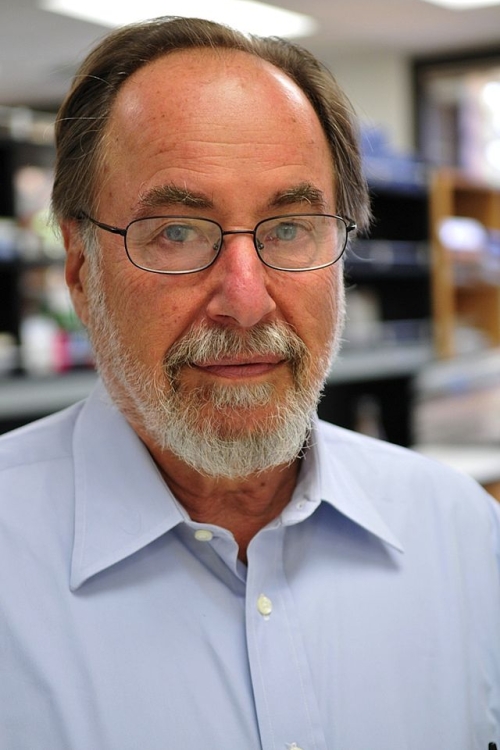
The Award, given for research accomplishments and scientific statesmanship that engender the deepest feelings of awe and respect, recognized Baltimore as, “One of the premier biomedical scientists of the last five decades, who is renowned for the breadth and beauty of his discoveries in virology,...
Read more
The multidisciplinary Massachusetts Institute of Technology effort aims to catalyze discoveries and innovations that lead to game-changing advances in addressing climate change. Gehring’s and Weng’s projects are key facets of Revolutionizing Agriculture with Low-emissions, Resilient Crops, an...
Read more
Hrvatin investigates how organisms enter the hibernation-like state called “torpor” and how their cells adapt and survive in these states. He has established an experimental paradigm for studying torpor behavior in mice; and has used it to discover the specific neurons that control entry into...
Read more
The Pew Charitable Trusts’ program supports outstanding young investigators pursuing scientifically risky work that could benefit human health. The award provides Jain with four years’ funding for studies of evolutionarily ancient metabolites called polyamines, which are essential for cell growth...
Read more
The Prize — one of the most prestigious in genetics — was awarded to Lehmann and fellow developmental biologists James Priess (Fred Hutchinson Cancer Research Center) and Geraldine Seydoux (Johns Hopkins University). It recognized their discoveries on the molecular mechanisms underlying the earliest...
Read more
The Paul G. Allen Frontiers Group’s ADI program provides three years of funding for notably creative, early-stage biological research projects that would not otherwise be supported by traditional research funding programs. Li combines approaches from synthetic biology, developmental biology, biophysics,...
Read more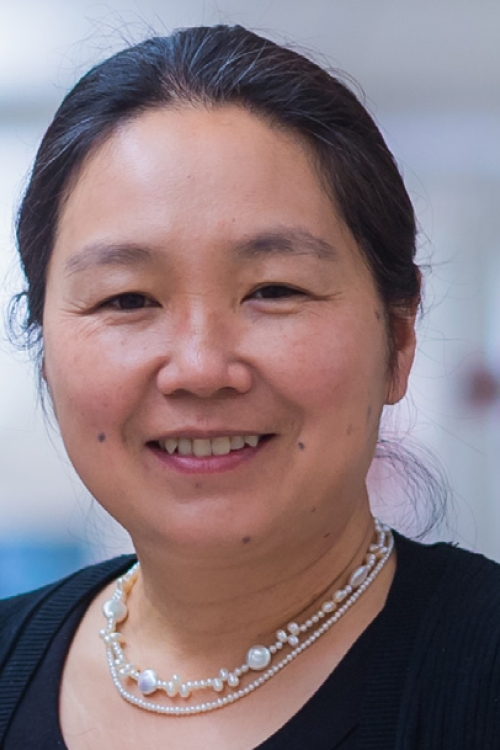
One of biology’s biggest mysteries is how germ cells — the precursors of egg cells and sperm — avoid aging from generation to generation. The Templeton-supported project focuses on the numerous repeated DNA sequences that occur within the sections of the genome supporting ribosomal function...
Read more
The Award — which advances high impact ideas with potential to drive new directions in biomedical research — supports Lourido’s studies of developmental transitions in single-cell pathogens, such as those that cause malaria and toxoplasmosis. Like caterpillars and butterflies, some single-cell...
Read more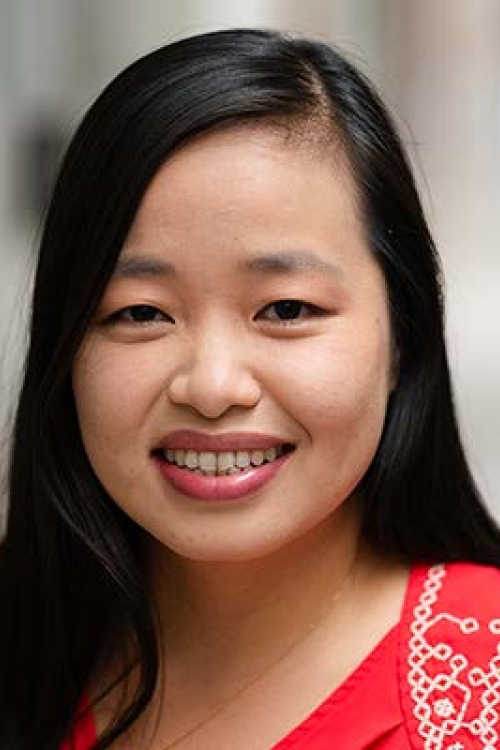
Working in the lab of Institute director Ruth Lehmann, Tran studies the endoplasmic reticulum as it operates in the ovary — seeking to understand how it is inherited across generations and how its malfunctions can lead to disease. One of 25 scientists selected for the prestigious appointment this...
Read moreOnline conversations on cutting-edge science
This year, thousands of participants tuned in to two of Whitehead Institute's online series that offer insights on leaders in biomedical science, biotechnology, and public health.
In the Director's Dialogue series, Whitehead Institute director Ruth Lehmann spoke with a wide range of experts and pioneers. Nobel Laureate Jennifer Doudna discussed her role in developing CRISPR-Cas9 genome editing. Kevin Churchwell, talked about the challenges and opportunities of leading the premier pediatric hospital, Boston Children's. Shah Family Foundation president Jill Shah described her organization’s partnerships with local governments to improve public health and nutrition. Researcher and entrepreneur Robert Langer shared his experiences in leading one of the world’s most productive and successful academic biotechnology labs. And Boston Globe CEO Linda Henry, along with STAT executive editor Rick Berke, discussed the importance of accurate science-based communications.
This year’s Scientific Webinar series spotlighted the work of several Whitehead Institute Members. Olivia Corradin shared her findings on the genetics of opioid addiction. Siniša Hrvatin discussed his studies on the mechanisms of animal hibernation. Rudolf Jaenisch described the results of his research into the genomic implications of SARS-COV-2 infection. Ruth Lehmann reviewed her investigations on the non-genomic mechanisms through which maternal information is passed on to progeny. And Robert Weinberg described his studies on the mechanisms through which cancer is able to proliferate in new tissues.
Find recordings of Director's Dialogues and Scientific Webinars on our YouTube channel. Find information about upcoming Dialogues and Webinars on our website.
Ruth Lehmann, Director, Whitehead Institute, and Jill Shah, President, Shah Family Foundation, discuss philanthropy as a catalyst for government innovation in the areas of nutrition, education, and economic support.
Ruth Lehmann, Director, Whitehead Institute, speaks with Jennifer Doudna, University of California, Berkeley professor and Nobel Laureate, about her role in the development of CRISPR-Cas9. They discuss the potential applications of this world-changing genetic technology, the societal and ethical implications of gene editing as well as current research projects, collaborations, and new advances in biology.
A conversation between Ruth Lehmann, Director, Whitehead Institute, and scientist and inventor, Robert Langer, MIT Institute Professor, on how chemical and biological engineering will impact human health.
How does fundamental science lead to treatments in the hospital? Watch the video for a conversation featuring Ruth Lehmann and Kevin B. Churchwell, MD, the President and Chief Executive Officer of Boston Children’s Hospital and a member of the Whitehead Institute Board of Directors.
Whitehead Institute director Ruth Lehmann spoke virtually on October 19, 2021 with Linda Henry, CEO, Boston Globe Media Partners, and Rick Berke, Co-Founder & Executive Editor, STAT, on the importance of accurate science communication.
Whitehead Institute Members Siniša Hrvatin and Sebastian Lourido discuss the mysteries of animal hibernation.
This webinar explains some of the non-genomic mechanisms for the transfer of maternal information to the next generation — and how that information uniquely shapes inheritance.
In this talk, Rudolf Jaenisch will summarize the stages of SARS-CoV-2 infection and highlight some puzzling observations.
Whitehead Institute Member Sebastian Lourido discusses his lab's latest findings on how parasites establish long-lived chronic infections in their hosts.
Community outreach at the Institute
For almost three decades, Whitehead Institute has maintained a steadfast commitment to science education and outreach by providing learning opportunities designed to enhance science teaching and literacy for the entire community. With a variety of programs ranging in scope from lectures and workshops for teachers and students to special events for non-scientists, Whitehead Institute offers its participants first-hand exposure to state-of-the-art research. Through the Institute’s K-12 programming, students are inspired to pursue their interest in science, technology, engineering, and math (STEM) and further explore scientific careers. Given the nation's increasing commitment to STEM, Whitehead Institute believes hands-on scientific programs are crucial for developing critically thinking young adults and cultivating the next generation of scientists.
This monthly program offers educators the opportunity to explore topics at the forefront of biomedical research. Interested educators are paired with Whitehead partners—Whitehead scientists who serve as a resource during the school year. Partners are eager to answer questions, discuss their fields...
Read moreThis program offers students an opportunity to learn about cutting edge topics in biomedical research. The three-day program, held over spring vacation, features lectures from leading scientific experts, hands-on laboratory sessions, visits to local biotech organizations, and opportunities to meet...
Read moreDesigned as a two week exploration into the amazing biology that thrives in the world around us, this summer science program for rising 7th...
Read moreBioNook is Whitehead Institute's online biology resource, offering exciting learning enrichment for students, parents and teachers. Find videos, podcasts and stories on Whitehead Institute Science, as well as virtual workshop opportunities through BioNook’s...
Read moreDirector and editor: Lisa Girard
Assistant editor: Merrill Meadow
Writers: Eva Frederick, Greta Friar, Amy Tremblay, Madeleine Turner
Primary photography: Gretchen Ertl
Additional photography: Amy Tremblay, Madeleine Turner, Bob Paz, licensed under CC-BY-SA-3.0
Photography also provided courtesy of: Kara McKinley, Sarah Williamson, Brit d’Arbeloff
Illustrations: Daniel Gray-Barnett, Steven Lee
Scientific Images: Yukiko Yamashita, Pulin Li, Benjamin Lin, M. Lucila Scimone, Kutay Deniz Atabay, Zoë Helene Kindermann, licensed under CC-BY-SA-4.0
Digital Design: WDB Agency, additional design work by Subbiah Design


